Ke Mei
HarmonySet: A Comprehensive Dataset for Understanding Video-Music Semantic Alignment and Temporal Synchronization
Mar 04, 2025Abstract:This paper introduces HarmonySet, a comprehensive dataset designed to advance video-music understanding. HarmonySet consists of 48,328 diverse video-music pairs, annotated with detailed information on rhythmic synchronization, emotional alignment, thematic coherence, and cultural relevance. We propose a multi-step human-machine collaborative framework for efficient annotation, combining human insights with machine-generated descriptions to identify key transitions and assess alignment across multiple dimensions. Additionally, we introduce a novel evaluation framework with tasks and metrics to assess the multi-dimensional alignment of video and music, including rhythm, emotion, theme, and cultural context. Our extensive experiments demonstrate that HarmonySet, along with the proposed evaluation framework, significantly improves the ability of multimodal models to capture and analyze the intricate relationships between video and music.
Hard-aware Instance Adaptive Self-training for Unsupervised Cross-domain Semantic Segmentation
Feb 14, 2023



Abstract:The divergence between labeled training data and unlabeled testing data is a significant challenge for recent deep learning models. Unsupervised domain adaptation (UDA) attempts to solve such problem. Recent works show that self-training is a powerful approach to UDA. However, existing methods have difficulty in balancing the scalability and performance. In this paper, we propose a hard-aware instance adaptive self-training framework for UDA on the task of semantic segmentation. To effectively improve the quality and diversity of pseudo-labels, we develop a novel pseudo-label generation strategy with an instance adaptive selector. We further enrich the hard class pseudo-labels with inter-image information through a skillfully designed hard-aware pseudo-label augmentation. Besides, we propose the region-adaptive regularization to smooth the pseudo-label region and sharpen the non-pseudo-label region. For the non-pseudo-label region, consistency constraint is also constructed to introduce stronger supervision signals during model optimization. Our method is so concise and efficient that it is easy to be generalized to other UDA methods. Experiments on GTA5 to Cityscapes, SYNTHIA to Cityscapes, and Cityscapes to Oxford RobotCar demonstrate the superior performance of our approach compared with the state-of-the-art methods.
Instance Adaptive Self-Training for Unsupervised Domain Adaptation
Aug 27, 2020



Abstract:The divergence between labeled training data and unlabeled testing data is a significant challenge for recent deep learning models. Unsupervised domain adaptation (UDA) attempts to solve such a problem. Recent works show that self-training is a powerful approach to UDA. However, existing methods have difficulty in balancing scalability and performance. In this paper, we propose an instance adaptive self-training framework for UDA on the task of semantic segmentation. To effectively improve the quality of pseudo-labels, we develop a novel pseudo-label generation strategy with an instance adaptive selector. Besides, we propose the region-guided regularization to smooth the pseudo-label region and sharpen the non-pseudo-label region. Our method is so concise and efficient that it is easy to be generalized to other unsupervised domain adaptation methods. Experiments on 'GTA5 to Cityscapes' and 'SYNTHIA to Cityscapes' demonstrate the superior performance of our approach compared with the state-of-the-art methods.
3rd Place Solution to "Google Landmark Retrieval 2020"
Aug 25, 2020
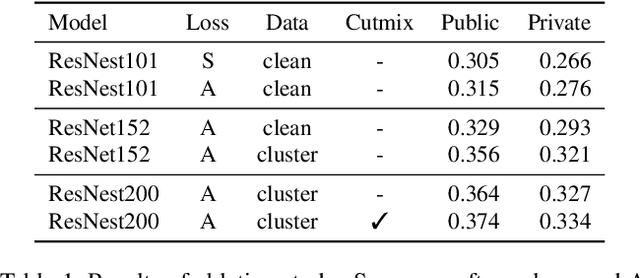


Abstract:Image retrieval is a fundamental problem in computer vision. This paper presents our 3rd place detailed solution to the Google Landmark Retrieval 2020 challenge. We focus on the exploration of data cleaning and models with metric learning. We use a data cleaning strategy based on embedding clustering. Besides, we employ a data augmentation method called Corner-Cutmix, which improves the model's ability to recognize multi-scale and occluded landmark images. We show in detail the ablation experiments and results of our method.
Multi-level colonoscopy malignant tissue detection with adversarial CAC-UNet
Jun 30, 2020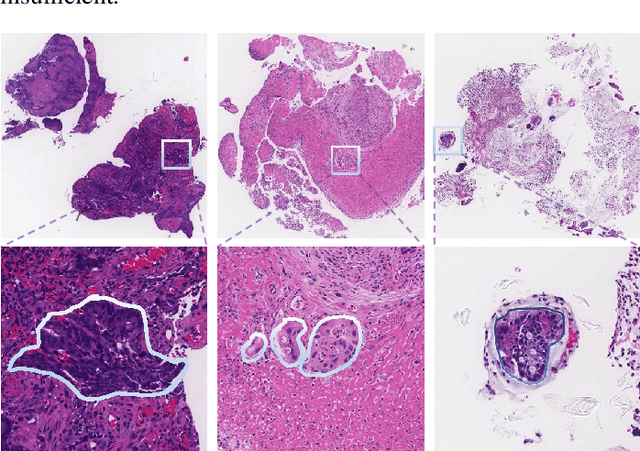

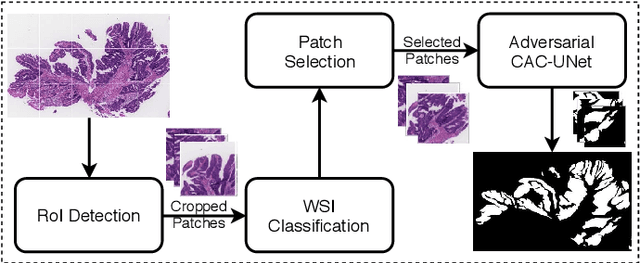
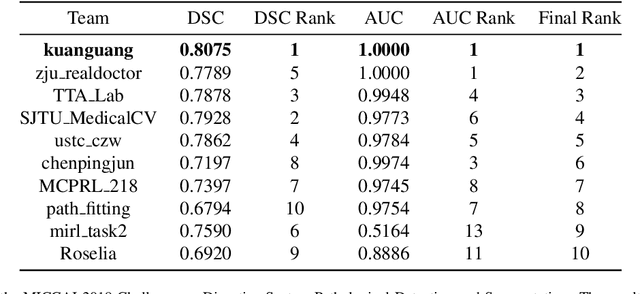
Abstract:The automatic and objective medical diagnostic model can be valuable to achieve early cancer detection, and thus reducing the mortality rate. In this paper, we propose a highly efficient multi-level malignant tissue detection through the designed adversarial CAC-UNet. A patch-level model with a pre-prediction strategy and a malignancy area guided label smoothing is adopted to remove the negative WSIs, with which to lower the risk of false positive detection. For the selected key patches by multi-model ensemble, an adversarial context-aware and appearance consistency UNet (CAC-UNet) is designed to achieve robust segmentation. In CAC-UNet, mirror designed discriminators are able to seamlessly fuse the whole feature maps of the skillfully designed powerful backbone network without any information loss. Besides, a mask prior is further added to guide the accurate segmentation mask prediction through an extra mask-domain discriminator. The proposed scheme achieves the best results in MICCAI DigestPath2019 challenge on colonoscopy tissue segmentation and classification task. The full implementation details and the trained models are available at https://github.com/Raykoooo/CAC-UNet.
Cross-stained Segmentation from Renal Biopsy Images Using Multi-level Adversarial Learning
Feb 20, 2020


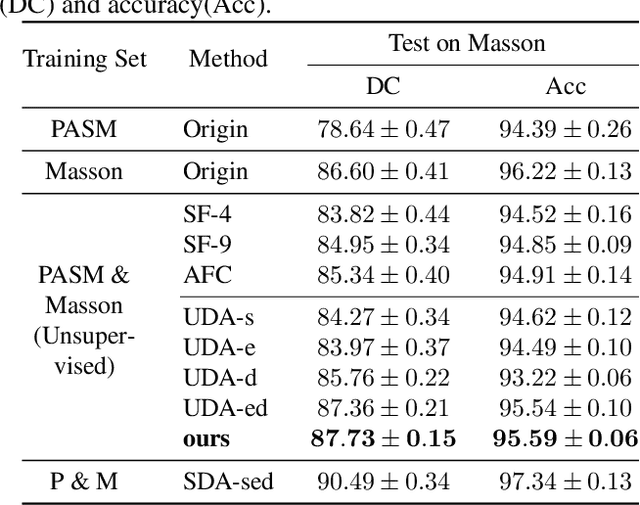
Abstract:Segmentation from renal pathological images is a key step in automatic analyzing the renal histological characteristics. However, the performance of models varies significantly in different types of stained datasets due to the appearance variations. In this paper, we design a robust and flexible model for cross-stained segmentation. It is a novel multi-level deep adversarial network architecture that consists of three sub-networks: (i) a segmentation network; (ii) a pair of multi-level mirrored discriminators for guiding the segmentation network to extract domain-invariant features; (iii) a shape discriminator that is utilized to further identify the output of the segmentation network and the ground truth. Experimental results on glomeruli segmentation from renal biopsy images indicate that our network is able to improve segmentation performance on target type of stained images and use unlabeled data to achieve similar accuracy to labeled data. In addition, this method can be easily applied to other tasks.
 Add to Chrome
Add to Chrome Add to Firefox
Add to Firefox Add to Edge
Add to Edge